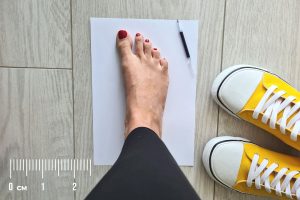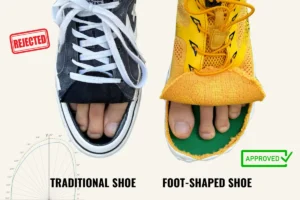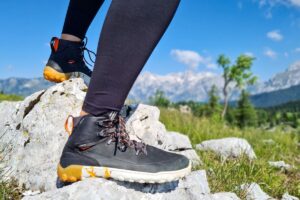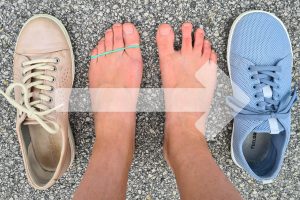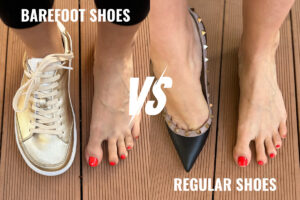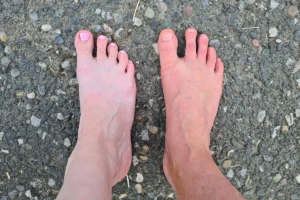What Are Barefoot Shoes? (And Why You Might Want Them)
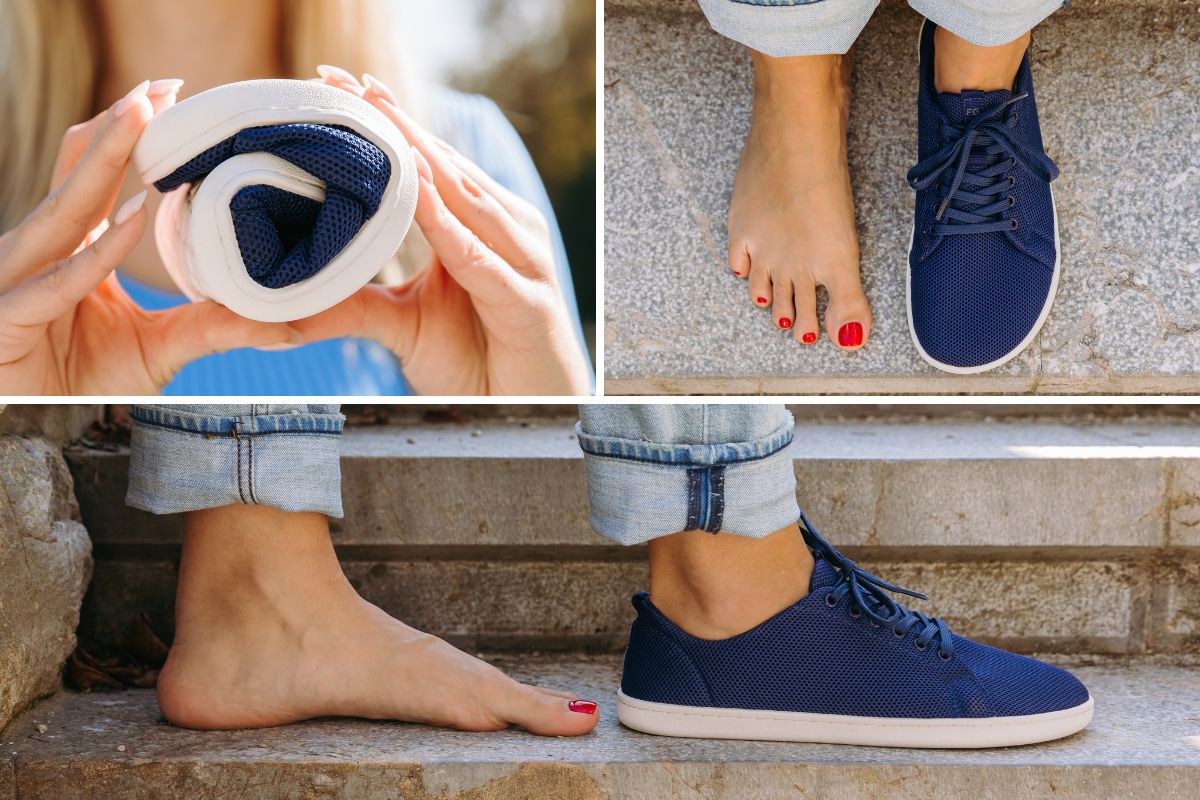
Barefoot shoes. Minimalist shoes. Zero-drop footwear. You’ve probably heard these terms tossed around, but what do they really mean?
If you’ve ever slipped off your shoes at the end of the day and felt an instant sense of relief, there’s a good chance your feet are craving something different—something more natural.
Enter: barefoot shoes.
In this guide, we’ll break down exactly what barefoot shoes are, what makes them different from traditional footwear, and why so many people are making the switch to this back-to-basics approach to foot health.
What Are Barefoot Shoes?
Barefoot shoes are made to feel like you’re walking barefoot—letting your feet move naturally and freely, without any restrictions—while still protecting you from sharp rocks, hot pavement, and dirty ground.
They’re the opposite of most modern shoes, which tend to:
- Lift your heel,
- Narrow your toe space,
- Support your arches (whether they need it or not),
- And limit the natural motion of your foot.
Barefoot shoes are built to let your feet be feet—strong, mobile, and naturally aligned.
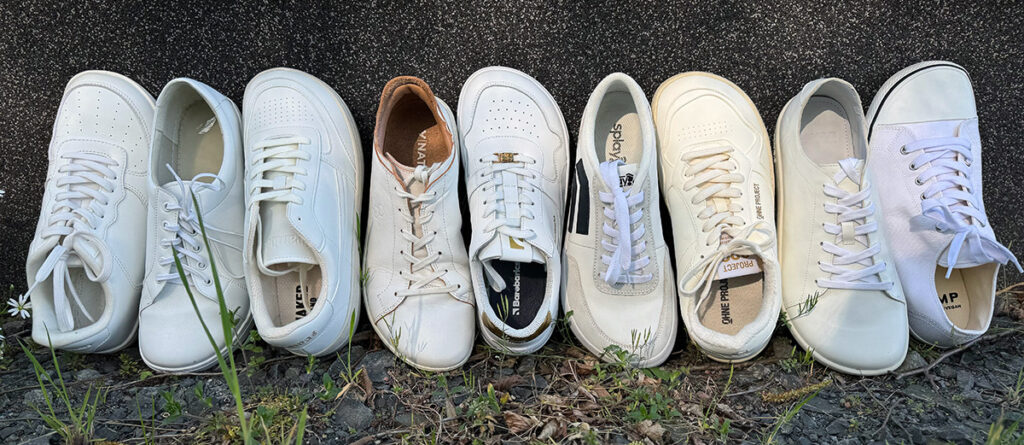
What Makes a Shoe Truly Barefoot?
To be considered a barefoot shoe, it must meet a few key functional criteria:
✅ Wide, Foot-Shaped Toe Box
Forget the pointy, narrow toe boxes that squish your pinky toe into your big toe’s business.
Barefoot shoes have a wide and foot-shaped toe box—meaning they follow the natural shape of your foot: widest at the toes, not the ball. They allow your toes to spread, lengthen, and move as they would when barefoot, which improves balance, alignment, and overall comfort.

💡 A wide toe box isn’t enough if it’s still rounded or symmetrical. It should be anatomically shaped, giving each toe the space it needs—because every toe plays a role in balance, strength, and proper movement.
✅ Zero Drop
The sole is completely flat—your heel and toes sit at the same level, just like when you’re barefoot.

✅ Lightweight and Flexible
Barefoot shoes are designed to be lightweight and flexible, allowing full range of motion and a more natural connection with the ground. This freedom of movement helps your feet function the way they were meant to.

✅ Thin Sole
You’ll feel more of the ground beneath you (also called ground feel or proprioception)—which actually helps your body move more efficiently.

✅ Secure Fit
Your foot should feel held, not loose. You shouldn’t need to grip with your toes to keep the shoe on—flip-flops and ballet flats, we’re looking at you.

✅ No Toe Spring
Your toes should lie flat when you stand and walk. Upturned soles may look sporty, but they interfere with balance and natural foot function.

Fit Matters: Function Only Works with the Right Fit
Even a perfectly designed barefoot shoe won’t do your feet any favors if it doesn’t fit properly.
To fully benefit from barefoot shoes, they must be:
- The right length – so your foot can fully extend when walking
- The right width – so your toes have room to spread naturally
- Securely attached – so your foot doesn’t slip or slide around inside
🔑 A barefoot shoe that’s too short, too narrow, or too loose is still a bad shoe.

That’s why we always recommend measuring your feet and choosing brands based on your foot shape and width—not just shoe size. (Psst: You can take our Foot Width Quiz to help you get started.)
How Are Barefoot Shoes Different from Traditional Shoes?
Most modern shoes interfere with your natural movement. Barefoot shoes, on the other hand, are flat, foot-shaped, and flexible—built to support the way you move, not just your foot.
In barefoot shoes, your feet do the work – not the shoes.
That might sound intense, but it’s actually how your body was designed to function.
Here’s a quick side-by-side comparison:
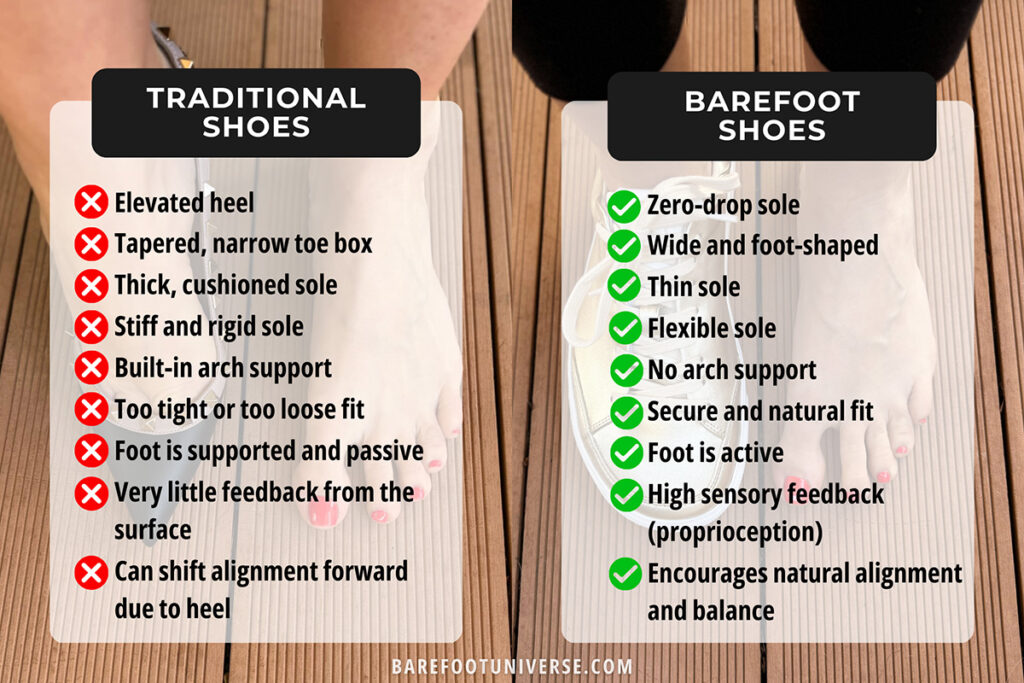
👉 Want the full breakdown? Read our in-depth comparison of barefoot vs traditional shoes
Why Do People Wear Barefoot Shoes?
Great question! People switch to barefoot shoes for all sorts of reasons. Here are some of the most common:
✅ To Strengthen Their Feet
Just like a cast can weaken your muscles, over-supportive shoes can weaken your feet. Barefoot shoes help activate foot muscles that have been asleep for years.
✅ To Improve Posture
Without a raised heel tipping your pelvis forward, your body can stand more naturally, reducing back and joint pain for many.
✅ To Relieve Foot Pain
Conditions like plantar fasciitis, bunions, flat feet, and toe pain can often improve when you stop squeezing and supporting your feet and instead let them move freely.
✅ To Feel More Grounded
Literally. The enhanced ground feel helps people feel more stable, balanced, and connected to their movement.
✅ To Move More Naturally
Many people are drawn to barefoot shoes because they want to return to a more natural way of moving. Modern footwear can interfere with how we walk, stand, and even run – barefoot shoes remove those barriers and let your body move the way it was designed to.
Curious about all the benefits? Read our full post on why barefoot shoes are good for you.
Are Barefoot Shoes Good for Everyone?
Not necessarily everyone – and definitely not overnight.
If you’ve been wearing supportive, cushioned shoes all your life, suddenly switching to barefoot shoes is like asking your foot to run a marathon with zero training.
Your foot muscles need time to wake up, and your body needs time to adjust.

⚠️ Common Mistakes:
- Jumping straight into long walks or runs in barefoot shoes
- Wearing the wrong size or fit
- Assuming barefoot shoes will “fix” everything instantly
✅ Do This Instead:
- Start wearing barefoot shoes around the house
- Do foot-strengthening exercises (we’ve got guides!)
- Choose the right barefoot shoes for your foot shape
- Gradually increase wear time and intensity
We’ve got guides on that—here’s how to transition to barefoot shoes the right way.
Are All Minimalist Shoes Barefoot Shoes?
Not quite. While the terms “minimalist” and “barefoot” are often used interchangeably, not all minimalist shoes meet the core barefoot shoe criteria:
To be considered truly barefoot, a shoe should be:
- Zero drop
- Foot-shaped
- Flexible
- Thin-soled (but not overly cushioned)
- Properly fitted to your foot
Some “minimal” shoes still have a narrower toe box, a slight heel rise, or a thicker sole, so it’s worth checking the specs before you buy.

👉 If you’re recovering from injury, have limited mobility, or simply need more support and cushion, you might prefer shoes that aren’t fully barefoot but still offer a wide, foot-friendly shape. Check out our guide to wide toe box shoes with extra cushion for supportive options that respect your toes.
Adjusting Your Eyes—and Your Mind
One thing many beginners notice?
Barefoot shoes look wider.
That’s because they follow the natural shape of the foot, which is wider at the toes. At first, your eyes might think, “Hmm… these look weird.”
Give it time.
🧠 Just like your feet, your eyes need time to adjust to what’s actually natural.
Eventually, those squished, pointy shoes will look strange – and your wide, healthy toes will start to feel just right.
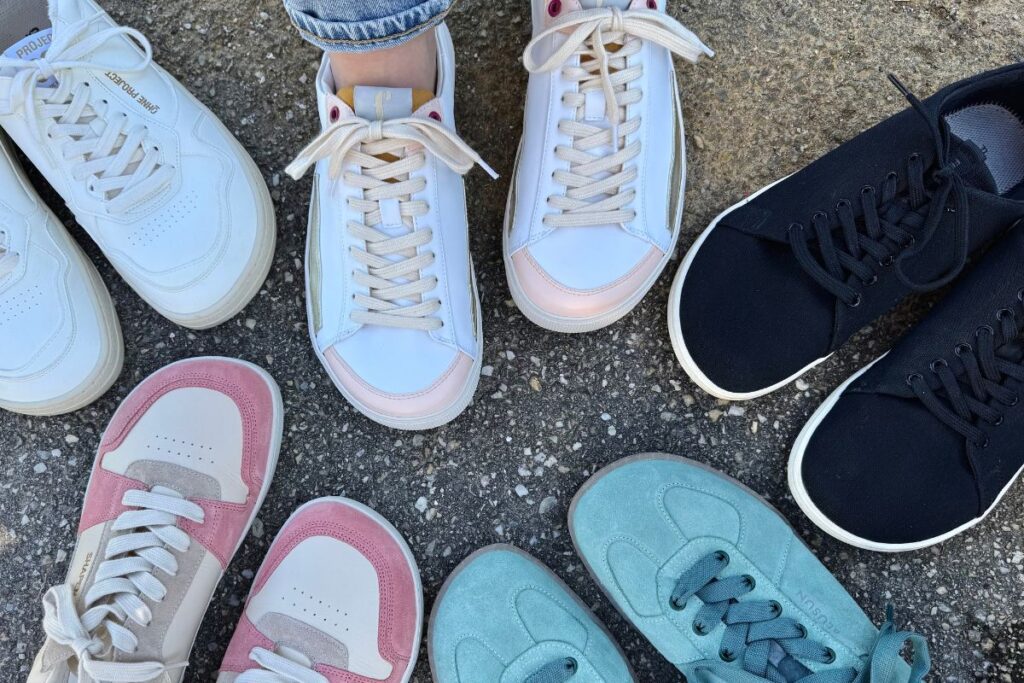
Final Thoughts
So, what are barefoot shoes?
They’re shoes that give your feet the space, strength, and freedom they’ve been missing.
No more squeezing. No more lifting. No more over-engineering. Just a return to the way your body was meant to move – from the ground up.
Whether you’re looking to relieve foot pain, improve your posture, reconnect with your natural movement, or simply feel more comfortable day-to-day, barefoot shoes might be exactly what your feet have been waiting for.
Curious which barefoot shoes are best for you?
Take our Foot Width Quiz or explore our shoe guides to find a perfect match for your foot shape and lifestyle.
Got questions? Drop them in the comments – we love talking feet. 🦶💬


